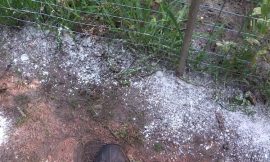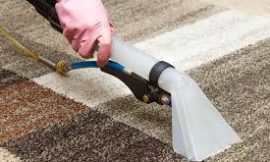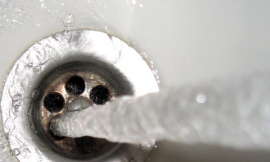
Did you know that almost 60% of washing machines develop mold at some point? Yikes! Mold not only stinks but can also affect the cleanliness of your laundry. If you've ever opened your washing machine to a musty smell or unsightly spots, you're not alone. But fear not! In this guide, I’m excited to show you how vinegar, a common household item, can be a game-changer in tackling mold and keeping your washing machine fresh. Let’s dive into the steps you can follow to reclaim your appliance!
Understanding Why Mold Grows in Washing Machines
Mold growth in washing machines is more common than many people realize. So, what are the typical culprits behind this issue? One primary cause is residual moisture. When you close the door after a wash, that damp environment becomes a breeding ground for mold spores. Additionally, detergent residues can accumulate in certain areas, which, combined with moisture, can create the ideal conditions for mold to thrive.
The impact of humidity and moisture on appliance health cannot be overstated. High humidity levels can contribute significantly to mold growth. If you live in a humid climate or use your washing machine frequently, you might find that moisture tends to linger longer in the drum and other components, increasing the risk of mold development.
To combat these issues, regular maintenance is crucial. By keeping both the machine and the area around it clean, you can minimize mold growth and ensure that your washing machine remains in good working order.
The Benefits of Using Vinegar for Cleaning
Vinegar is an excellent choice for cleaning your washing machine, thanks to its natural antibacterial properties. It can effectively kill mold spores and bacteria that may be lurking inside. Plus, it's free from harsh chemicals, making it a safe option for both you and the environment.
Another reason to consider vinegar is its eco-friendly nature. Unlike chemical cleaners that may have harmful effects on the planet, vinegar is a sustainable alternative, breaking down naturally and not polluting water systems.
Finally, vinegar is incredibly cost-effective and widely available. You can find it in any grocery store, and you won't need to spend a lot to keep your washing machine clean and mold-free.
Step-by-Step Guide to Cleaning Mold with Vinegar
Cleaning mold from your washing machine with vinegar is straightforward. Here’s how to do it:
Preparation: Gather Necessary Materials
Start by collecting your materials. You’ll need white vinegar, a soft cloth, and possibly a measuring cup for accuracy.
Empty the Machine: Why You Should Start with an Empty Load
Before you begin, make sure to run a cycle with an empty machine. This ensures that you’re not just mixing the vinegar with dirty laundry, allowing the solution to work more effectively.
Add Vinegar: How Much to Use and Where to Put It
Pour about two cups of white vinegar into the detergent compartment of your machine. This area is specifically designed to distribute the cleaner evenly throughout your washing cycle.
Run a Cycle: Settings to Choose for Optimal Cleaning
Select the hottest water setting and run a full wash cycle. The heat helps to activate the vinegar's cleaning properties, allowing it to break down any mold and mildew present.
Wipe Down: Cleaning the Door Seal and Detergent Drawer
After the cycle is complete, use a cloth dipped in vinegar to wipe down the door seal and the detergent drawer. These areas are often overlooked but can harbor mold spores.
Additional Tips for Mold Prevention
To keep your washing machine mold-free, consider implementing regular rounds of vinegar washing. A monthly cleaning cycle can help regulate moisture and prevent buildup.
Also, focus on drying techniques. After completing a wash, leave the door open for a while to allow air circulation. This simple step prevents humidity from becoming trapped inside the drum.
Lastly, check for leaks or drainage issues that could create persistent moisture. Regularly inspecting your machine can save you from facing mold problems down the line.
Alternatives for Cleaning Mold
If you're looking for other natural cleaning solutions, baking soda is a fantastic option. It can be used alone or in combination with vinegar for enhanced cleaning effects.
However, in some cases, you might consider using chemical cleaners, especially if the mold issue is severe or persistent. Always read labels and ensure that the cleaner is suitable for use in washing machines to avoid damage.
Conclusion
Cleaning mold from your washing machine doesn't have to be a daunting task. With vinegar and a simple approach, you can keep your washing machine fresh and your laundry smelling great! Remember to incorporate routine cleaning and airflow to prevent mold from coming back. So grab that vinegar, and let’s make laundry day more enjoyable! Have any tips or tricks that have worked for you? Share them below!






